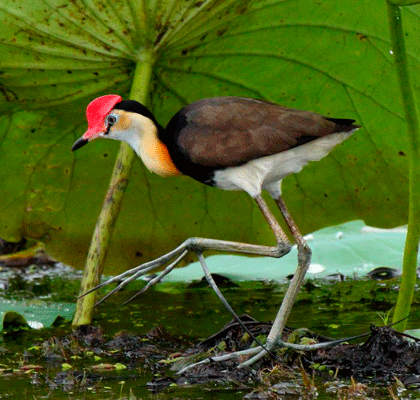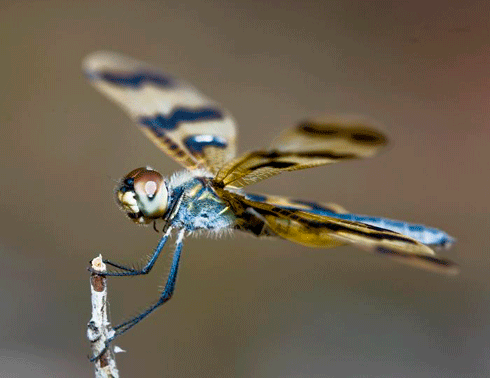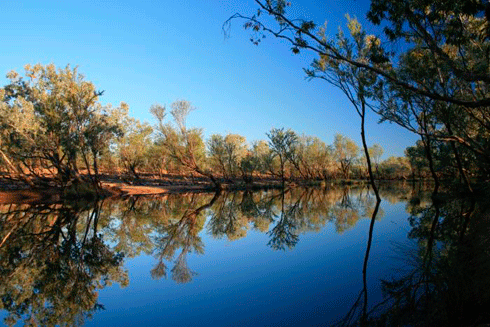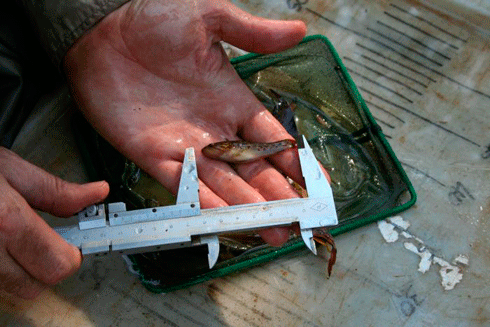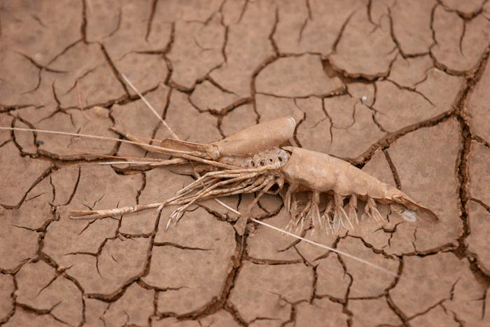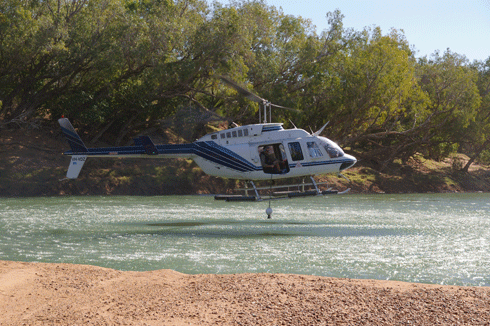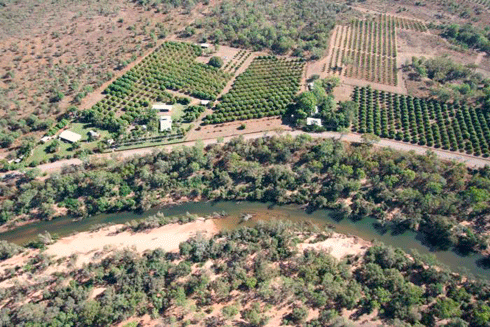
|
Published: 16 January 2012
Outsmarting cane toads: lessons from a small marsupial
It seems that small dasyurids in northern Australia instinctively know how to avoid being poisoned by cane toads. Their example is behind an unusual experiment to ‘train’ endangered northern quolls to become ‘toad-smart’.
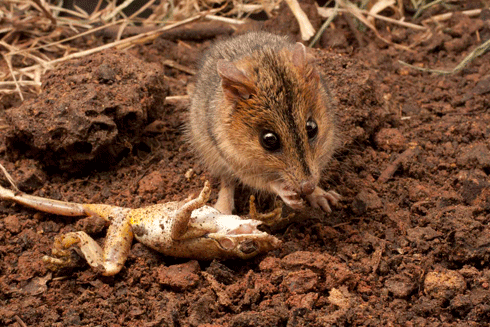
|
|
Cane toad or frog? Although in this case its prey is a native frog, this tiny red-cheeked dunnart can quickly learn to reject toxic cane toads. Credit:
Jonathan Webb
|
The cane toad is one of Australia’s most successful invaders. This highly toxic amphibian was introduced to Queensland in 1935, and has since spread across much of northern Australia, most recently to parts of Western Australia.
Unfortunately, native animals that normally prey on frogs are highly susceptible to the cane toad’s bufotoxins, which differ from the toxins found in native frogs. In fact, native animals can die after mouthing or ingesting cane toads: populations of goannas, blue-tongue lizards, freshwater crocodiles and northern quolls in the Northern Territory have plummeted since cane toads invaded.
Among the native carnivores threatened by cane toads are small marsupials belonging to the Dasyuridae family – dunnarts, phascogales, and antechinus. Populations of these small dasyurids have declined in Kakadu National Park since toads invaded, despite the concurrent loss of their predators – goannas, snakes, and northern quolls (larger dasyurids).1 This recent collapse in small mammals could be due to several causal agents – changes to fire regimes, predation by feral cats and lethal poisoning by cane toads.
Given the uncertainty about which causal agent is responsible for the population collapse, a research team – comprising Dr David Pearson, Professor Rick Shine and myself – has investigated the risk of cane toad poisoning to small carnivorous marsupials (‘A small dasyurid predator (Sminthopsis virginiae) rapidly learns to avoid a toxic invader’ published in a recent issue of Wildlife Research).
Our research focused on the red-cheeked dunnart, a small (20 g) species particularly at risk from cane toads because it feeds on native frogs and toads (and hence, may also consume toads), has declined in abundance, and has a small geographic range that will eventually be encompassed by cane toads.2
To determine whether cane toads could threaten red-cheeked dunnarts via lethal toxic ingestion, we captured ‘toad-naïve’ adult dunnarts from the Kimberley – parts of which are still free of cane toads – maintained them in captivity, and filmed their predatory behaviour during encounters with metamorph (juvenile) cane toads.
Encounters between dunnarts and small toads will almost certainly occur during the wet season, when cane toads breed, but it would be extremely difficult to observe such encounters in the wild. By contrast, our feeding trials allowed us to rapidly assess the vulnerability of individuals of this species to toad poisoning.
The feeding trials revealed that dunnarts, like other small dasyurids, are highly efficient hunters, directing their well-aimed ‘killer’ bites to the prey’s head. This allows them to rapidly incapacitate large, potentially dangerous prey, while minimising the risk of receiving prey-inflicted injuries.
Importantly, by biting the small cane toads on the cranium first, most dunnarts were able to kill their prey without puncturing the toxin-laden parotid glands. They would then begin eating the toads snout-first before quickly rejecting them, suggesting the dunnarts could either detect the toad’s toxins, or were experiencing nausea from them.
Remarkably, most red-cheeked dunnarts consistently rejected cane toads as prey after their first encounter. During subsequent encounters with cane toads, ‘toad-educated’ dunnarts would either sniff the toads from a distance and ignore them, or taste and reject the toads unharmed.
This is an example of taste-aversion learning, which occurs when predators ingest novel prey, become ill, and subsequently associate the taste or smell of the prey with illness.3 Unlike classical behavioural conditioning, where individuals require multiple trials to learn, predators can learn to avoid toxic prey after a single bout of illness, even if the illness occurred several hours after the prey was ingested. Importantly, many food aversions are long-lasting; in our trials, dunnarts rejected toads as food for the duration of testing (three weeks).
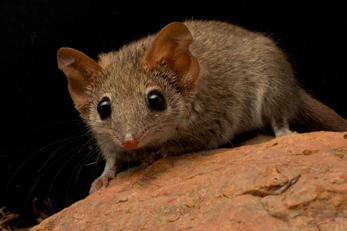
|
|
Another small but fierce northern dasyurid is the ningbing antechinus from the east Kimberley, which is endemic to the Kimberley region. Credit:
Jonathan Webb
|
Other small dasyurids exhibit remarkably similar predatory strategies – killing prey by biting the head, head-first ingestion of prey – and, like red-cheeked dunnarts, are too small to attack mature (and thus lethal) cane toads. Hence, we hypothesise that most small dasyurids are unlikely to be at risk from toad poisoning.
The notable exceptions are the larger-bodied northern quoll (Dasyurus hallucatus) and, possibly, the northern brush-tailed phascogale (Phascogale pirata). Populations of both species in northern Australia will need to be carefully managed to prevent local extinctions following the arrival of cane toads.
Encouragingly, it may be possible to educate northern quolls to avoid consuming cane toads by offering them toad-aversion baits (‘toad sausage’ containing an undetectable nausea-inducing chemical) before the toads invade.4 Quolls that consume such baits would become ill and, provided some individuals ignore large, lethal-sized invading cane toads they subsequently encounter, populations would not go locally exinct.
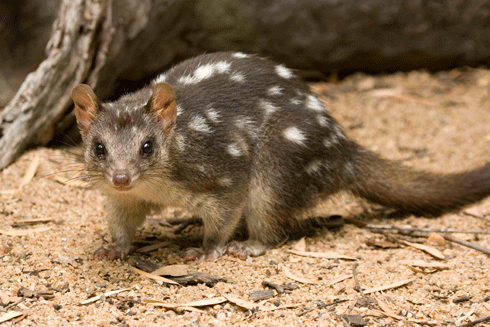
|
|
A northern quoll: researchers hope that tainted ‘toad sausage’ bait could turn these large dasyurids off cane toads. Credit:
Jonathan Webb
|
We are currently trialling such toad-aversion baits with our colleagues from the WA Department of Environment and Conservation and the Territory Wildlife Park.
Dr Jonathan Webb teaches Tropical Wildlife Biology and Management at The University of Sydney. His research interests include conservation biology, wildlife management, animal behaviour, and physiological and behavioural ecology. His current research focuses on the use of conditioned taste aversion for mitigating the impacts of cane toads on native predators. The aim is to ultimately develop a bait that would condition predators in the wild to avoid attacking cane toads.
This is the third in our recent series in ECOS on biodiversity conservation in northern Australia, which includes John Woinarski writing on Northern Australia’s disappearing native mammals and Brad Pusey on Managing the future of the north’s aquatic biodiversity.
1 Woinarski, J. C. Z., M. Armstrong, K. Brennan, A. Fisher, A. D. Griffiths, B. Hill, D. J. Milne, C. Palmer, S. Ward, M. Watson, S. Winderlich, and S. Young. 2010. Monitoring indicates rapid and severe decline of native small mammals in Kakadu National Park, northern Australia. Wildlife Research 37:116-126.
2 Webb, Jonathan K., Pearson, David, and Shine, Richard (2011) A small dasyurid predator (Sminthopsis virginiae) rapidly learns to avoid a toxic invader. Wildlife Research 38, 726–731.
3 Garcia, J., W. G. Hankins, and K. W. Rusiniak. 1974. Behavioural regulation of the Milieu Interne in man and rat. Science 185:824-831.
4 O'Donnell, S., J. K. Webb, and R. Shine. 2010. Conditioned taste aversion enhances the survival of an endangered predator imperilled by a toxic invader. Journal of Applied Ecology 47:558-565.


